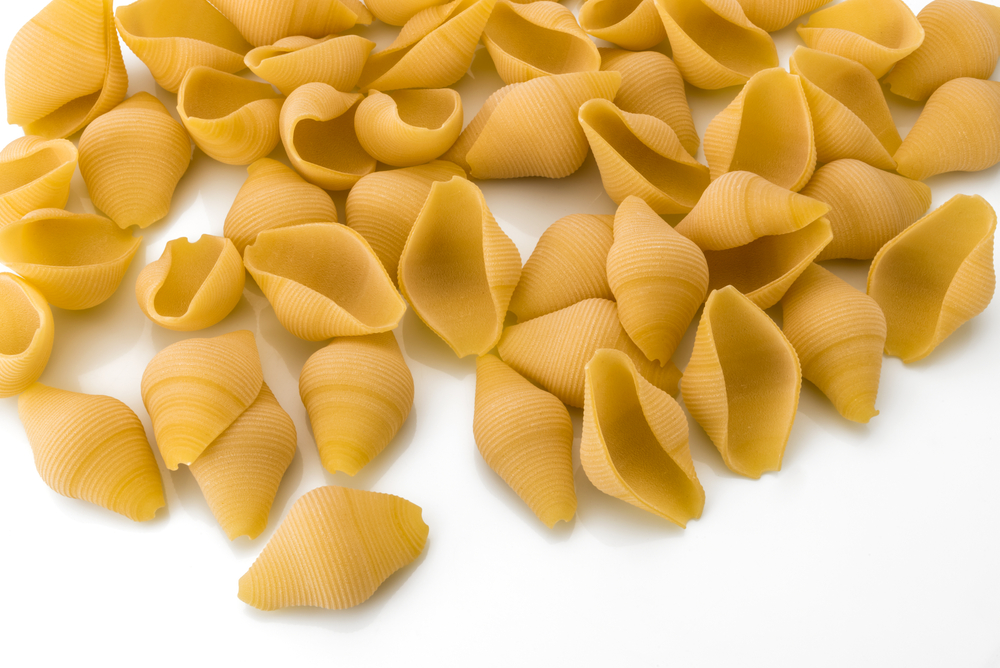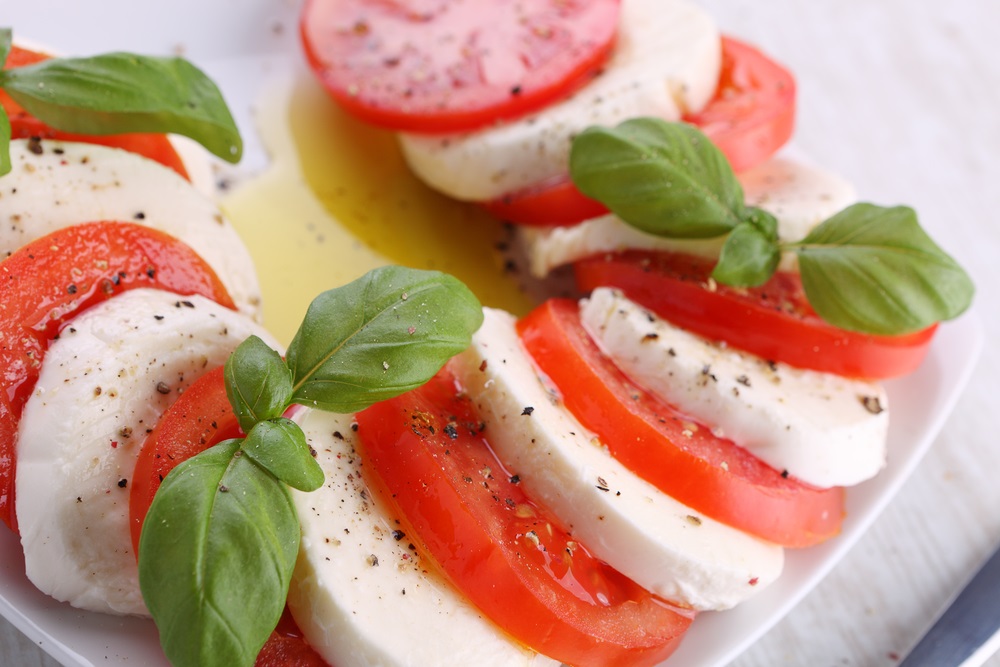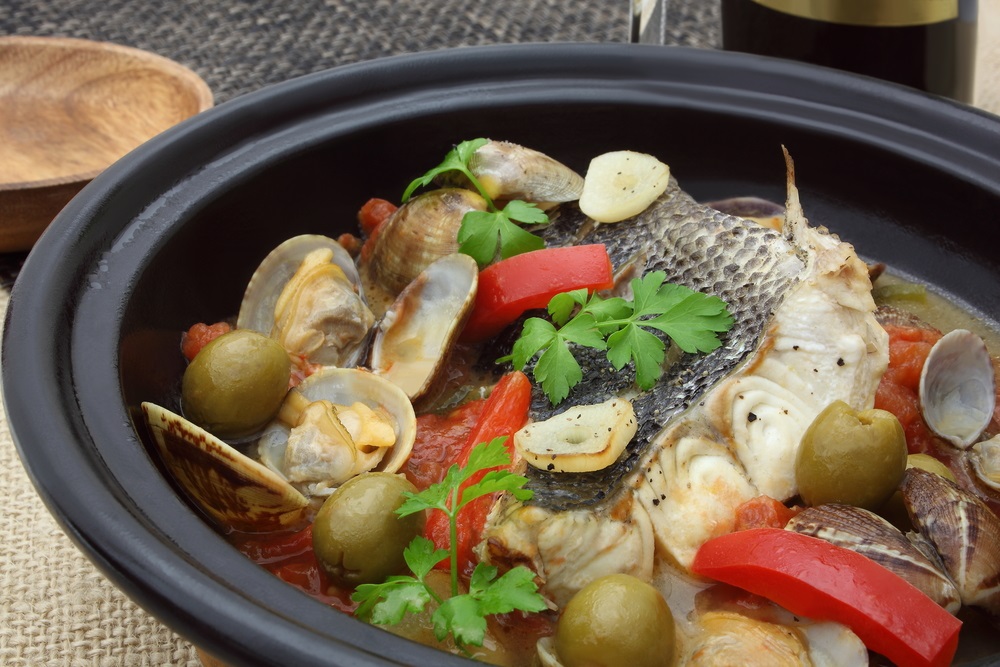
Le Marche Culinary Delights: An Insider’s Guide to Authentic Regional Dishes
August 11, 2021
Discover Le Marche's culinary diversity, from Adriatic seafood to Apennine stews and pasta, all enriched with local ingredients like olives and truffles.
By: Nicole Dickerson / Last updated: April 8, 2024
Estimated reading time: 16 minutes
Home to the picturesque Amalfi Coast and mainland Europe’s only active volcano, Campania boasts a vibrant food scene as swoon-worthy as its breathtaking landscapes. Once a vital part of the Roman Empire, this region drew the Romans to its fertile, nutrient-rich lands and the quaint coastal fishing villages of Amalfi, Cetara, and Positano for nourishment. Campania’s cuisine remains simple and fresh, showcasing produce from its bountiful terrains and seafood from its picturesque coast. The culinary approach varies from land to sea, emphasizing meat in the inland areas and fish on the coast. Standing as the birthplace of pizza, Naples pulses at the heart of the region’s culinary identity, offering a rich tapestry of flavors that encapsulate the essence of Campania.

Guide to Italian Gastronomy and Cuisine: Read more
Campania’s cuisine is a celebration of vibrant flavors and high-quality local ingredients. This region, home to the enchanting Amalfi Coast in Southern Italy, offers an array of culinary delights worth exploring. The Amalfi Coast, a timeless jewel, is renowned for its breathtaking coastline, luxurious hotels, charming villages, and an exquisite array of food and wine, each adding to the allure of this Southern Italian paradise.
Anyone who has ever visited the Amalfi Coast knows the unmistakably fragrant citrus aromas and sweet flavors of Amalfi lemons. They’ve been cultivated on terraced hillsides in the province of Salerno for centuries. Due to their long, spindly shape, these lemons are known as sfusato Amalfitano in Italy, as sfusato means spindle. Today, they exist thanks to small bitter lemons, which arrived in Amalfi through the Middle East. Local farmers in Campania crossed these bitter lemons with oranges to produce the sweet, fragrant Amalfi lemons we know today. Whether fresh or in Amalfi’s famous limoncello, they offer an unforgettable taste of the Amalfi Coast.

Mozzarella di Bufala, or buffalo mozzarella in English, became the only mozzarella to achieve the Protected Designation of Origin status in 1996. To be labeled under the PDO, the mozzarella must be made 100% from the milk of domestic water buffalo in the provinces of Caserta, Salerno, Naples, and Benevento in Campania. In addition, limited provinces from Lazio, Puglia, and Molise are also incorporated in the designation, though Caserta and Salerno represent 90% of total Mozzarella di Bufala production.
Buffalo milk is rich in protein, fat, and calcium, lending itself to a creamy, delicately sweet cheese. Learn more about Mozzarella di Bufala’s production process on the PDO’s consortium website.
Ricotta di Bufala Campana is made by processing the first whey from the production of Mozzarella di Bufala Campana. Within Campania, Ricotta di Bufala can be made in the provinces of Benevento, Caserta, Naples, and Salerno. This cheese is known for its soft, creamy consistency and sweet flavors.
Provola is a stretched curd cheese from Campania made of cow’s milk. After being shaped, the cheese is immersed in brine and dried for four months. When smoked, it’s known as Provola affumicata. Provola can have mild and sweet or very sharp flavors depending on how long it’s aged.

Hailing from the city of Gragnano, pasta di Gragnano epitomizes the pinnacle of Italian pasta craftsmanship. The tradition of family-owned pasta factories in Gragnano traces back to the 16th century. By the 1860s, this city had earned the moniker “city of macaroni,” distinguishing itself as the world’s leading pasta production hub.
The variety of pasta di Gragnano is extensive, encompassing long, short, laminated, and baked types. Its creation, using durum wheat semolina and the pristine water from Gragnano’s local aquifer, is a testament to the power of simple, high-quality ingredients. The natural drying techniques employed have been pivotal in propelling pasta di Gragnano to international acclaim, making it a symbol of culinary excellence in pasta.

As we know and love it today, pizza was first created in Naples. When King Umberto I and Queen Margherita of Savoy visited Naples in 1889, baker Raffaele Esposito made a pizza to honor the queen. At the Naples pizzeria “Pietro…e Basta Così,” the first pizza Margherita was baked with colors representing the Italian flag. Red tomatoes, green basil, and white mozzarella di Bufala adorned this signature pizza, the classic Napoletana or Neapolitan pizza.
Both Margherita and Marinara pizzas are recognized as official Neapolitan pizzas under the “Verace Pizza Napoletana” designation. Both start with a basic risen dough of water, salt, yeast, and flour baked in a woodfired oven at 430°- 480°C. Marinara pizza is topped only with tomatoes, oregano, garlic, and extra virgin olive oil. Meanwhile, the traditional Margherita pizza is made with tomato, oil, mozzarella or fiordilatte cheese, grated cheese, and basil. The more modern take on Margherita pizza often features fiordilatte cheese over buffalo mozzarella. Established in 1984, the Associazione Verace Pizza Napoletana provides international regulations on what makes an authentic Neapolitan pizza based on oral accounts from generations of Neapolitan pizza makers.
Furthermore, in 2017, the culinary art of Neapolitans, “pizzaiuoli,” or pizzamakers, was also given UNESCO World Heritage status. The UNESCO status covers the four-step dough preparation process and the woodfired oven cooking techniques of the pizzamakers.
While pizza Napoletana is the star of Naples, there are a few other styles of pizza not to be missed. First, pizza marinara is the traditional Neapolitan pizza topped only with tomatoes, oregano, garlic, extra virgin olive oil, and sometimes basil.
Next, pizza portafoglio, or wallet pizza, is the ideal way to eat pizza Napoletana on the go. It’s made by taking the classic Neapolitan pizza and folding it up to make it portable. Pizza marinara can also be savored as a pizza portafoglio.
Pizza fritta, though born out of necessity, demonstrates Neapolitan’s love for all things fried. After WWII, items like mozzarella and wood for the woodfired ovens became a luxury in Naples. Consequently, the less expensive pizza fritta, or fried pizza, was highly popular. Pizza fritta was typically stuffed with pork cracklings and ricotta and then fried in oil until golden brown and crispy. Today, you can order pizza fritta with various fillings at many Neapolitan pizzerias throughout the city.
Also, don’t miss the Parigina, or Parisian, a pizza made with Neapolitan pizza dough. The dough is topped with tomato, cheese, and prosciutto cotto. Then, those toppings are covered with a layer of puff pastry. Finally, be sure to try pizza di Scarola alla Napoletana. This pizza is more like a pie filled with stewed escarole, raisins, pine nuts, anchovies, and extra virgin olive oil.

The Caprese salad is an antipasto from Campania that is now enjoyed worldwide. It’s made with tomatoes, Mozzarella di Bufala, basil, extra virgin olive oil, and salt. There are two stories behind how this flavor-packed yet straightforward salad was created; the first dates to WWII when a mason worker in Capri wanted a light meal for lunchtime so he could quickly get back to work. So, he created a light salad representative of his beloved Italy. The second story says the salad was first made at a hotel in Capri for Filippo Tommaso Marinetti, the founder of Futurism. Marinetti thought pasta was too traditional, so the hotel served him Caprese salad made in Italian flag colors instead.
Another delicious fried food in Campania, mozzarella in Carozza, is an indulgent antipasto everyone should try once. Different family recipes abound depending on the region. The Neapolitan version of mozzarella in Carozza involves sandwiching mozzarella between two slices of bread. Then, dredge the sandwich in flour and eggs before frying in hot oil until the mozzarella in the carozza is golden brown.
When craving seafood in Naples, look to polipetti affogati or small drowned octopuses. This Neapolitan seafood dish involves drowning the octopuses in a tomato stew made of San Marzano tomatoes, tomato purée, garlic, white wine, and chile flakes. Finally, parsley and lemon garnish polipetti affogati, which are usually served with bread or toast to soak up all that delicious sauce.

Spaghetti con le vongole, or spaghetti with clams, is a traditional Neapolitan dish enjoyed along the Amalfi Coast and on the islands of Capri and Ischia. Typically, it’s made with veraci clams, a baby clam that provides flavor for this dish. To make spaghetti con le vongole, the clams are cleaned, soaked, and then sautéed with garlic, parsley, white wine, and chile flakes until they open. Then, cooked spaghetti (or linguine) is tossed with the clams and wine sauce, sprinkled with parsley, and drizzled with olive oil. Some Neapolitans also add fresh tomatoes.
Colatura di alici is a semi-fermented, flavorful liquid made in Cetara by curing anchovies with salt. Curing occurs in chestnut barrels where the salt draws the liquid from the anchovies. That liquid collects at the bottom of the barrels and is later bottled as colatura di alici. Spaghetti con la colatura di alici is a simple pasta dish made with this anchovy sauce, garlic, parsley, chile flakes, and olive oil.
Gnocchi all Sorrentina is one of the best-known pasta dishes in Campania. This delicious dish hails from Sorrento and involves smothering homemade potato gnocchi in a rich tomato and mozzarella sauce flavored with fresh basil. Next, the gnocchi is topped with more mozzarella or pecorino and baked until the cheese has melted and a golden crust forms on top. Traditionally, gnocchi alla Sorrentina is baked and served in a single-portion clay pot called a pignatiello.
It is a typical food of Campania, especially Naples; minestra maritata is a soup often served at Christmas and throughout winter. The name means married soup, referring to the ideal marriage of ingredients. Many variations exist, but the base ingredients must include black cabbage, chicory, escarole, pork rinds, pork feet, pork ribs, and sausage. Everything is simmered together until the meat is tender and a rich broth has formed. Minestra maritata can be topped with grated cheese to serve.
Pasta, fagioli e cozze is a Neapolitan take on the peasant dish pasta e fagioli, which is enjoyed in several Italian regions. Land meets the sea in this simple, filling dish savored in the summer months from May to August when mussels are freshest. It’s made with mixed short pasta, cannellini beans, garlic, white wine, olive oil, chile flakes, tomatoes, and mussels with their cooking liquid. The dish has a thick, creamy consistency that’s loaded with flavor.

Frittata di Maccheroni, or frittata di spaghetti, is a hearty piatto unico traditionally prepared to utilize leftover pasta from Sunday’s Ragù. It can be prepared with ragù (Rossa/red) or without ragù (Bianca/white). To make the frittata, leftover pasta is mixed with eggs, caciocavallo, scamorza cheese, prosciutto, pancetta, or whatever is in the refrigerator. Once cooked, frittata di maccheroni can be eaten hot or cold and is often savored at picnics or on the beach.
While many Italian regions have their take on parmigiana di melanzane, the Neapolitan version is made with dark-skinned, elongated eggplants, which are slightly more bitter. First, the eggplants are sliced lengthwise and salted to remove excess liquid. Then, the eggplant slices are dredged in flour and fried in oil until golden brown. Next, the fried eggplant is layered with freshly prepared tomato sauce and slices of mozzarella. After sprinkling with Parmigiano Reggiano, the parmigiana di melanzane is baked in the oven and left to rest for one hour before serving.

Totani e patate is an example of food in Campania, where mare meets terra, or sea meets land. Squid and potatoes come together for a tasty dish from the Amalfi Coast. First, Totani e patate is made with potatoes sautéed in a pan with olive oil and garlic. Then, strips of red squid are sautéed with onions, garlic, and olive oil in the same pan after removing the potatoes. Wine and crushed tomatoes are added and simmer before returning the potatoes to the pan. The most popular recipes for totani e patate are from Positano and Praiano.
Acqua pazza, or crazy water, is a cooking technique used with fish like sea bass, sea bream, red snapper, or perch in the coastal regions of Campania. This crazy water method involves cooking the fish in water, salt, oil, garlic, and cherry tomatoes. Pesce all’acqua pazza is a healthy, low-calorie preparation that highlights the flavors of fresh fish.
In the coastal areas of Campania, as in many Italian regions by the sea, fritto misto di mare is a beloved delicacy. The key to an exceptional fritto misto lies in the freshness of the seafood, a bounty readily available along the Amalfi Coast, complemented by the region’s stunning seaside vistas. A typical fritto misto assortment features fresh anchovies, squid, shrimp, prawns, and mixed fish. Each piece is lightly coated in semolina flour and fried to balance the crispy exterior and tender interior perfectly. Enhanced with a spritz of zesty Amalfi lemon juice, fritto misto di mare captures the essence of Campania’s maritime flavors in every bite.
For an authentic taste of Naples beyond pizza, polpette alla Napoletana is an absolute must-try food in Campania. These meatballs are one of the most ancient and renowned recipes of Naples handed down by grandmothers from one generation to the next. Polpette all Napolitana is made with ground beef, breadcrumbs, egg, Parmigiano Reggiano, salt, and pepper. The addition of pine nuts and raisins makes them distinctly Neapolitan. The meatballs are fried in olive oil to cook and then simmered in freshly prepared tomato sauce before serving.
Another classic Neapolitan meat dish, ragù Napoletano, is a highly cherished food in Campania. This meat and tomato sauce takes a lot of time to prepare, but the result is worth the labor of love. The dish is also known as ragù guardaporta because it used to be prepared by doormen while observing their posts. The ragù preparation starts with sautéing a soffrito of pancetta and prosciutto with a local aromatic herb called piperna. Whole cuts of different types of meat are used for the ragù, including beef and pork ribs. When beef steaks are included, they’re often rolled up with a mixture of pine nuts, garlic, parsley, cheese, and seasonings.
The key to success is cooking the ragù Napoletano for many hours over a low flame to achieve the dish’s signature complex flavors and texture. For serving, the sauce can be enjoyed with pasta for a primo piatto, while the meat is served as a secondo piatto.

Pastiera Napoletana is a cake with a short pastry crust typically served around Easter. The filling for the short pastry crust is made with eggs, grano cotto (pre-cooked wheat grains), sugar, ricotta, lemon zest, candied orange peel, and orange blossom water. Pastiera’s flavors are genuinely reminiscent of spring in Naples, and it’s usually served cold. Though it originated in Naples, pastiera is now widely enjoyed throughout Italy for Easter.
Sfogliatelle are multi-layered pastries whose name means leaf layers in reference to the hundreds of layers of crisp puff pastry they contain. They have a ricotta and semolina filling and are dusted with powdered sugar. These irresistible pastries were first made in the seventeenth century at the Santa Rosa monastery in Salerno. Today, you’ll find regional variations like sfogliatelle ricce (curly) and sfogliatelle frolle made with a sweet shortcrust instead of puff pastry.
Babà al rum is a traditional Neapolitan sweet brought to the region by chefs who trained in France and worked in the kitchens of the wealthy in Naples. These sticky sponge cakes soaked in citrusy rum syrup originated in the eighteenth century in the Duchy of Lorraine. Babà al rum soon caught on and became a Neapolitan dessert adored by all. The sponge cake, or babà, is made from flour, yeast, milk, sugar, eggs, butter, and salt. After baking until golden brown, the babà are soaked in a syrup made of rum, sugar, lemon zest, orange zest, and water. The result is a melt-in-your-mouth delicious dessert that can’t be missed.
This captivating region produces exceptional wines using ancient Greek grape varieties, crafting unique reds and aromatic whites. Varietals like Greco and Aglianico, noted by the Roman historian Pliny, testify to the region’s rich viticultural history. The region boasts notable wine towns like Tufo, Avellino, and Taurasi, with over 60% of its wine production focused on whites, including the celebrated Fiano, Falanghina, and Falerno. Campania’s flagship red, Aglianico, is best embodied in the dense, dark Taurasi wines, which are among Southern Italy’s finest and require aging. Feudi di San Gregorio’s Taurasi is one of the country’s top red wines, highlighting Campania’s potential as a premier wine-producing region.
If you would like us to customize an exclusive luxury tour, contact us and let us know your travel plans. We offer luxury food and wine tours for private groups of a minimum two guests. In addition, all of our private, chauffeured tours are available year-round upon request.

